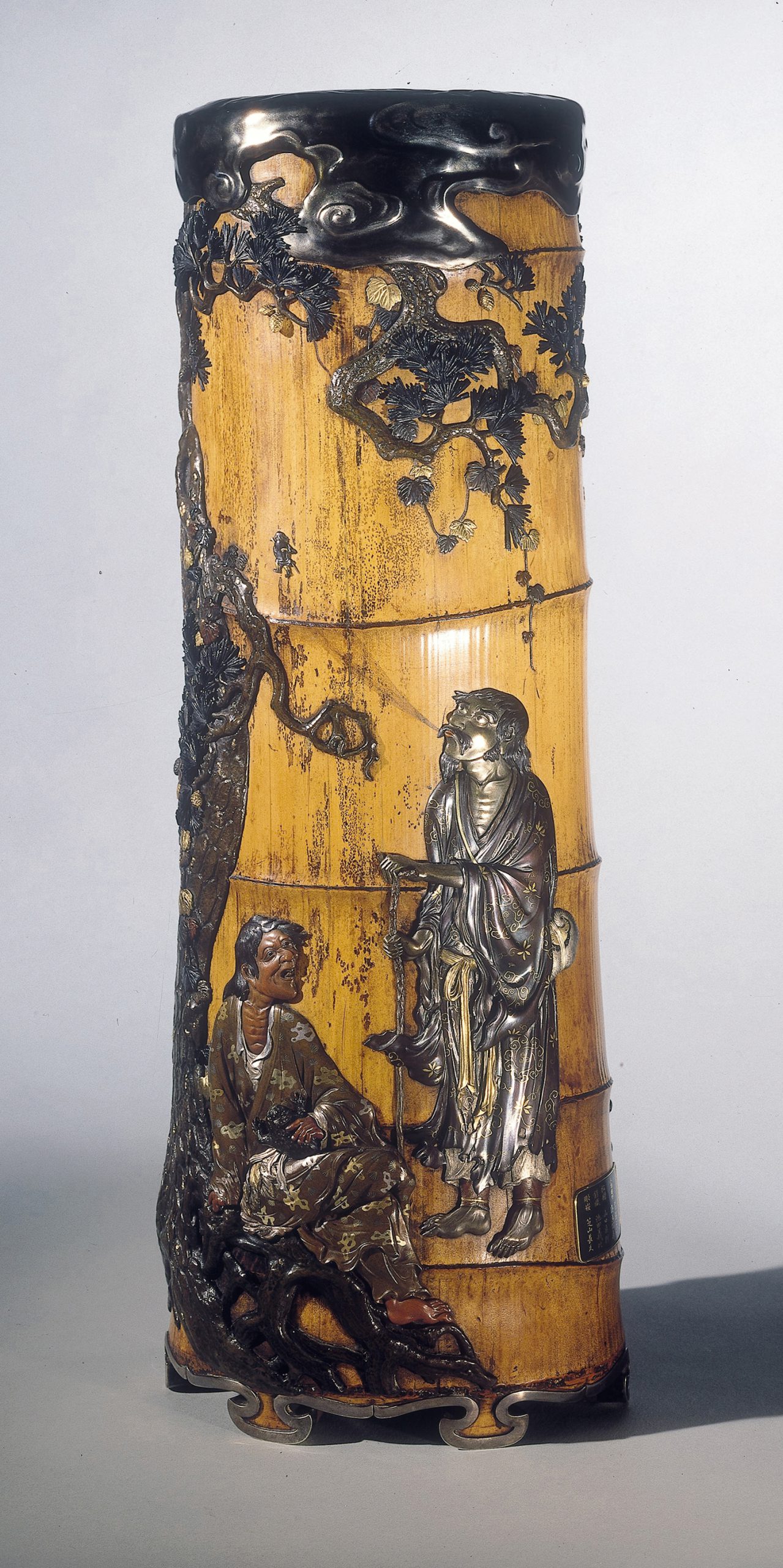 Print Page
Print Page
 Print Page
Print Page
Location: Japan
Materials: bamboo, iroe takazogan, gold, silver, shakudo, copper, yamagane, shinchu and shibuichi
Dimensions: height 54 cm
Accession Number: M 45
Other Notes:
A large cylindrical vase formed from a single section of a bamboo, raised on six silver-rimmed ruyi-form feet. The vase applied in iroe takazogan with three sennin gathered beneath a massive pine-tree, each with his attribute. Tekkai Sennin shown blowing his spirit out on its way to paradise, Gama Sennin sitting with his three-legged toad on his lap, and Shokwaro Sennin standing carrying his huge double gourd over his shoulder and gazing upwards, presumably in search of the white horse that has escaped its confinement within the gourd, Worked in a variety of metals including gold, silver, shakudo, copper, yamagane, shinchu, and several tones of shibuichi.
Serizawa Ryumin was a pupil of Kobayashi Tenmin, who was a pupil of Iwamoto Konkan. He lived in Asakusa in Tokyo and specialized in kanamono. He was particularly renowned for his metalwork figures. He worked for the commissioners Kawaguchi Yohei and Wakamatsu Takejiro. He exhibited at the First National Industrial Exposition in 1877, where he won a kamon (fourth) prize.
Watanabe Nobuyoshi also made sword-fittings under the name Isobe Isshu. He was known to be a pupil of Funada Ikkin, himself a pupil of Goto Ichijo. Ikeda Yoshitaka is recorded as living in Tokyo in the Meiji period.
Bibliography:
O. Impey, M. Fairley (eds.), Meiji No Takara: Treasures Of Imperial Japan: Metalwork Vol II, London 1995, cat. 82.
J. Earle, Splendors of Imperial Japan: Arts of the Meiji period from the Khalili Collection, London 2002, cat. 118, p. 183.

